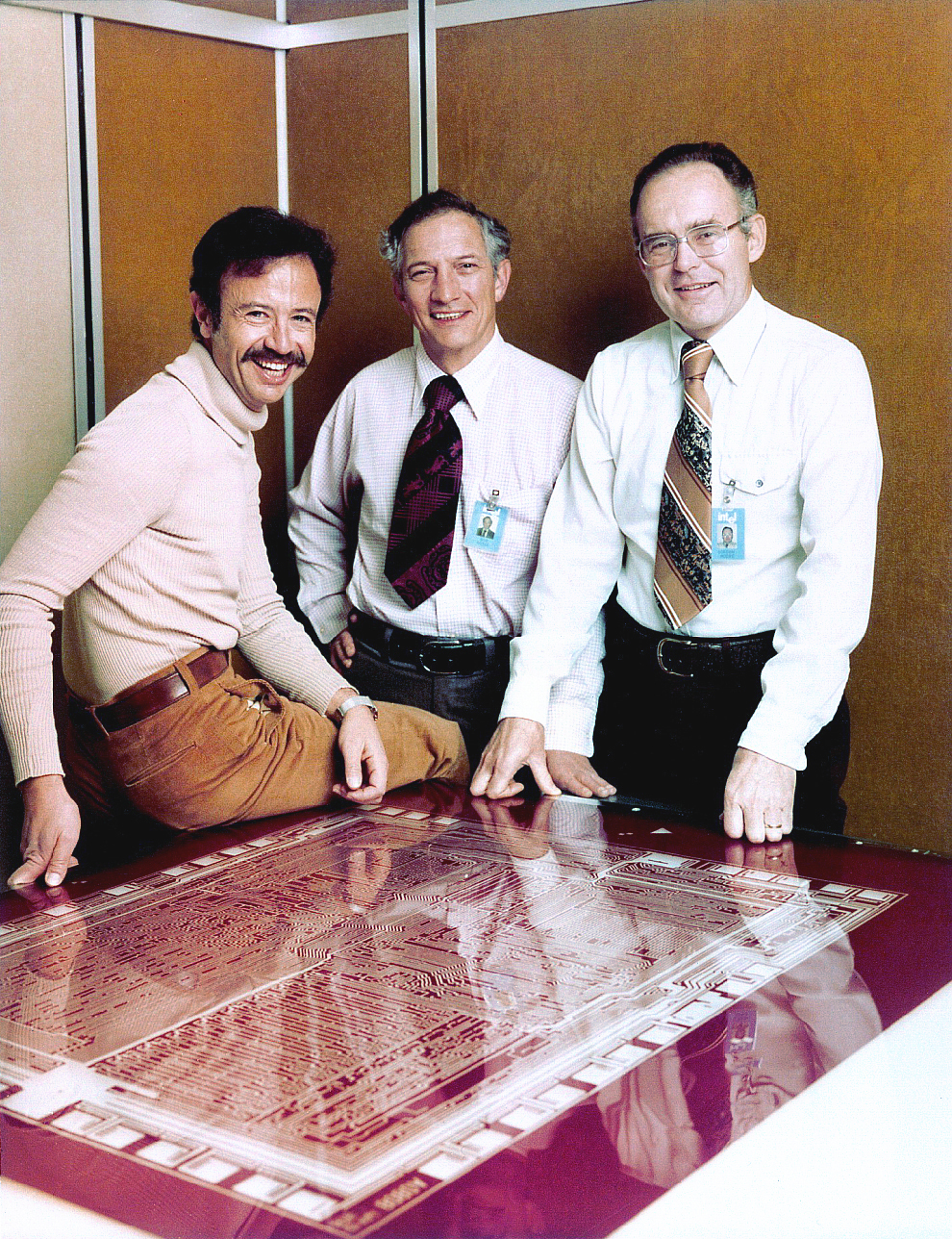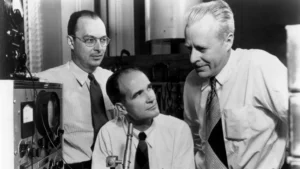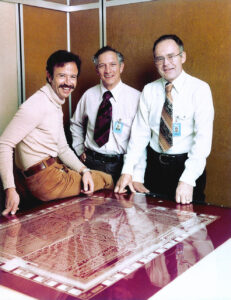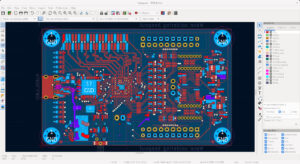
Introduction
In the ever-evolving landscape of technology, few names resonate as profoundly as Intel. Since its inception, Intel has been synonymous with innovation, spearheading advancements that have shaped the way we live, work, and connect with the world around us.
From the iconic Intel Inside logo adorning millions of devices to groundbreaking discoveries in semiconductor design, Intel’s journey is not just a story of technological prowess but also one of resilience, vision, and unwavering dedication to pushing the boundaries of what’s possible. Join us as we embark on a journey through the storied history and ongoing legacy of innovation at Intel.
Follow us on Linkedin for everything around Semiconductors & AI
The Spark of Innovation
It was a spring afternoon in 1968 when Gordon Moore ( yes, the “Moore’s Law” one) visited Robert Noyce’s home. Amidst a casual chat, while Noyce was mowing his lawn, the seed of Intel was planted. Moore suggested that semiconductor memory could be the foundation of a new venture. This idea led to the incorporation of Intel, with Andy Grove joining the duo, marking the start of a revolution.
The semiconductor industry was in its early stages, and the trio of Moore, Noyce and Grove were navigating a landscape filled with formidable obstacles.
Manufacturing Mastery One of the primary challenges was mastering the manufacturing process. The founders were to produce semiconductor memory at a time when the technology was still unproven and manufacturing techniques were not yet standardized.
Market Uncertainty The market for semiconductors was uncertain; the demand for such advanced technology was not guaranteed. Intel’s founders had to convince investors and the industry of the viability and necessity of their products.
Intellectual Property and Legal Landscape Navigating the intellectual property and legal landscape was also a challenge. As pioneers in a new field, Intel’s founders had to establish and protect their innovations in an environment where the rules were still being written.
These challenges were compounded by the fact that they were creating a new market, not just a new product. The founders of Intel were not only building a company; they were helping to build an industry.
Read more 2nm Chip Design Costs $725 Million: Can the Industry Afford It? – techovedas
Laying the Foundation
With $2.5 million of funding secured by the venture capitalist Arthur Rock, Moore and Noyce, along with the indomitable Andy Grove, laid the foundation for what would become a tech titan.
Arthur Rock’s investment philosophy was deeply rooted in a belief in people and their potential to create transformative companies. He was not merely interested in the financial aspect but was driven by the prospect of building great businesses. Rock once said, “Success for me is helping to build great companies. That’s how I get my kicks.” This philosophy led him to invest in Intel, recognizing the vision and innovative spirit of Noyce, Moore, and Grove.
Read more What are Quantum Effects At 7/5nm Tech Node And Beyond – techovedas
Humble Beginnings to Technological Triumphs
The early days of Intel were marked by relentless innovation. The company’s maiden product, The Intel 1101 chip, introduced in July 1969, was a game-changer.

It was the world’s first commercially available metal-oxide-semiconductor (MOS) static random-access memory (SRAM) chip. This 256-bit SRAM represented a significant leap forward in semiconductor memory technology. The 1101 chip’s silicon gate MOS technology gave Intel the competitive edge it needed to produce high-density memories.
But it was the introduction of the world’s first microprocessor in 1971 that truly cemented Intel’s legacy, revolutionizing computing forever. This 4-bit CPU was a marvel of its time, showcasing the superiority of MOS silicon gate technology, which allowed for a significant increase in performance and integration compared to previous technologies. With 2,300 transistors, it replaced the existing multi-chip CPUs, enabling engineers to create more compact and efficient computing systems.
Read more 6 Major Highlights from TSMC Technology Symposium 2024 – techovedas
Run of Innovation
Beyond the 4004 microprocessor, here are numerous technological achievements of Intel that have shaped the computing world:
The Pentium Processor: In 1993, Intel introduced the Pentium brand, which became synonymous with personal computing. The Pentium processors were known for their enhanced performance capabilities, especially in multimedia applications, and played a pivotal role in the proliferation of PCs during the 1990s.
The Core Series: The Intel Core series, first launched in 2006, represented a significant advancement in CPU technology. The Core processors offered improved performance, energy efficiency, and thermal management, catering to the needs of both general consumers and enthusiasts.

Graphics Processing Units (GPUs): Intel has made significant strides in the graphics domain. With its Integrated Graphics Processing Units (iGPUs) and the Intel Arc series of GPUs, they cater to the high-performance general-purpose and gaming PC market.
Field-Programmable Gate Arrays (FPGAs): Intel’s acquisition of Altera expanded its portfolio to include field-programmable gate arrays (FPGAs). FPGAs are used in a wide range of applications from data centers to automotive systems.
Artificial Intelligence and Autonomous Cars: Intel has also been active in the fields of artificial intelligence and autonomous cars, with investments in companies like Mobileye and innovations in vehicle automation sensors.
Read More: Why Did SK Hynix Ditch NAND for $14.6 Billion HBM Plant – techovedas
A Legacy Carved in Silicon
Intel’s journey is a testament to the power of human ingenuity. From its first sale to its global expansion, the company has not only witnessed but also instigated the evolution of the digital era. With a staggering revenue of $54.23 billion in 2023, Intel’s impact is both undeniable and unparalleled.
Intel’s global expansion has been a strategic blend of acquisitions and the establishment of offices and manufacturing sites across the world, reflecting its commitment to innovation and market leadership.
Strategic Acquisitions Over the years, Intel has made significant acquisitions to bolster its technological capabilities and market presence. Notable acquisitions include:
- Altera, a leading provider of field-programmable gate array (FPGA) technology, acquired for $16.75 billion in 2015.
- Mobileye, a pioneer in autonomous driving technologies, acquired for $15.3 billion in 2017.
- McAfee, a renowned security software company, acquired for $7.68 billion in 2010.
These acquisitions have allowed Intel to diversify its portfolio and maintain its edge in a competitive industry.
Read More:AI GPU Market 2024: NVIDIA dominates with $40B, AMD rises to $3.5B, Intel lags at $500M – techovedas
Conclusion
The story of Intel is more than a corporate chronicle; it’s a narrative of visionary zeal and relentless pursuit of progress. As we stand on the shoulders of these giants, we look towards a future where the silicon spark continues to ignite endless possibilities.




